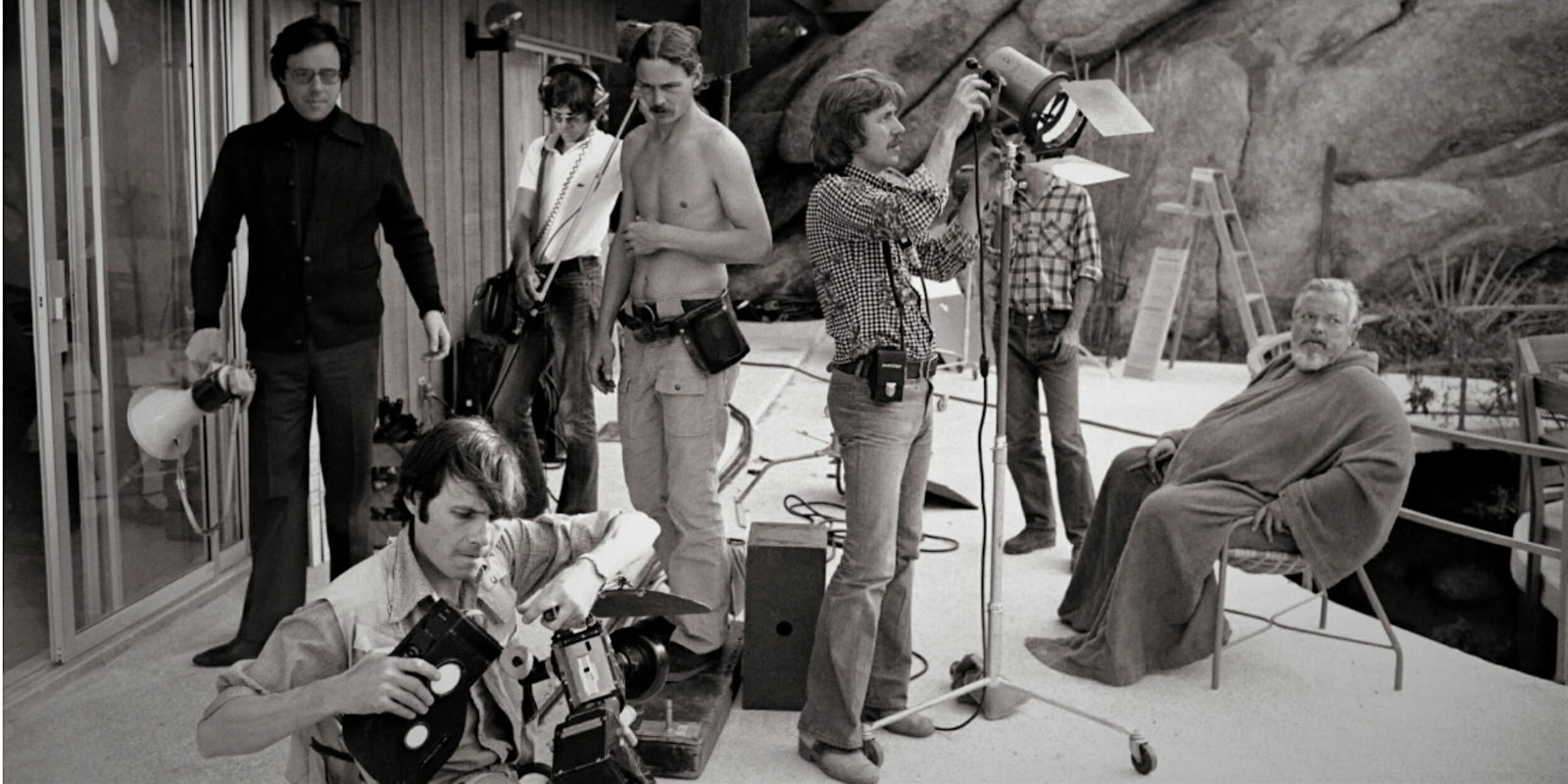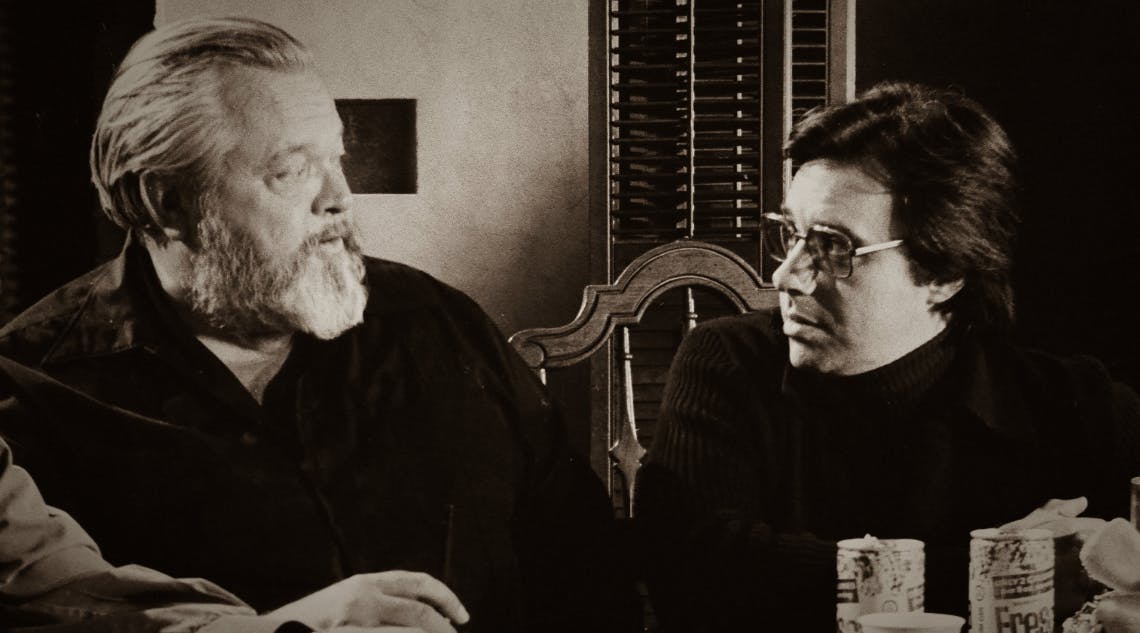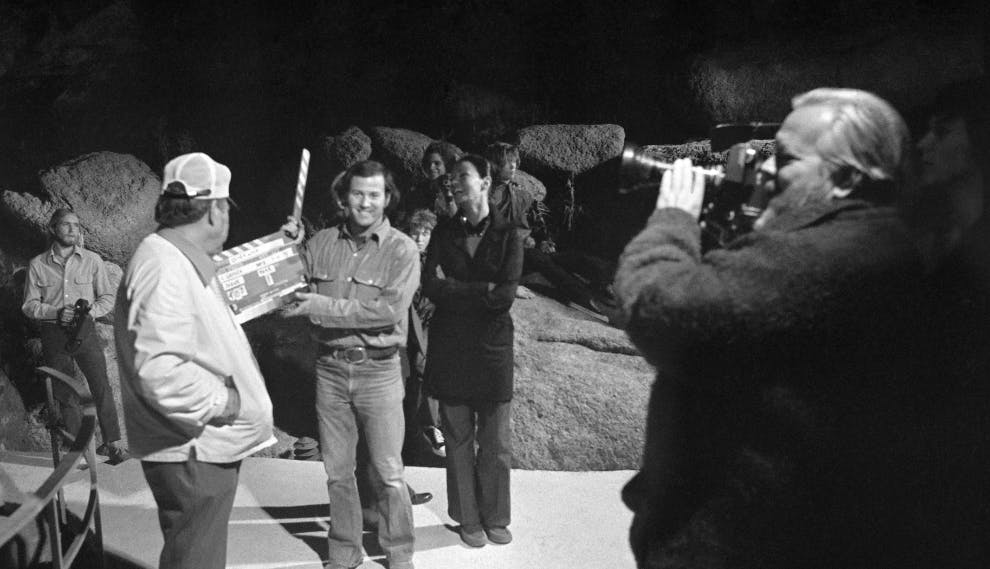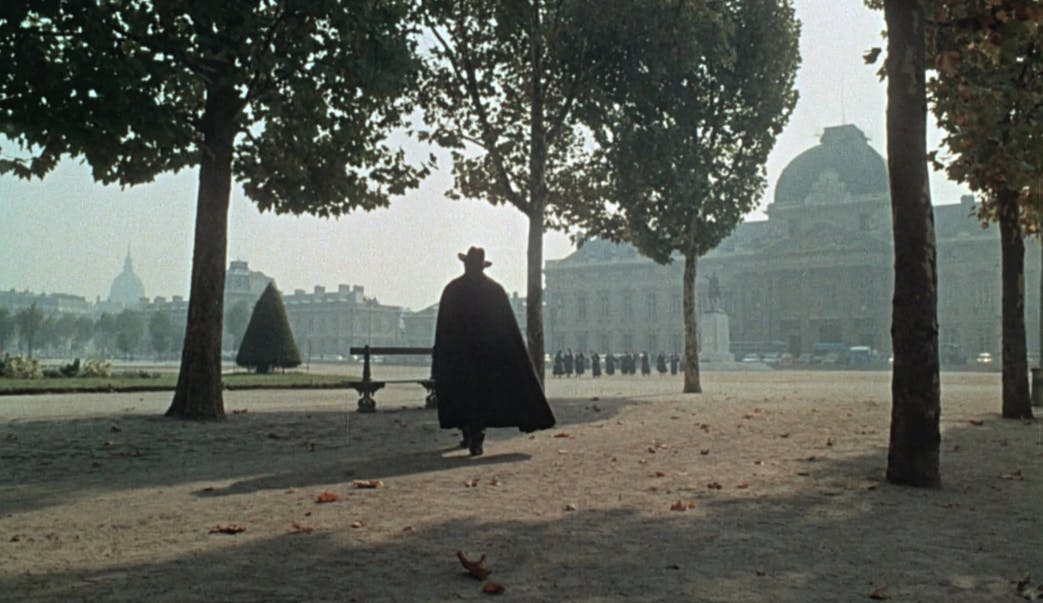At one point in They’ll Love Me When I’m Dead, the documentary companion to Orson Welles’ previously unfinished film The Other Side of the Wind (both out Friday on Netflix), one actor involved with the production remarks they were like a “circus of scattered souls.”
That memory becomes a mantra by the end of the documentary, directed by Morgan Neville (20 Feet From Stardom, Won’t You Be My Neighbor?). They’ll Love Me When I’m Dead isn’t a traditional making-of documentary with narrative structure and chronological markers. It’s frenzied, jumbled, morose—much like The Other Side of the Wind.
Production on The Other Side of the Wind began in 1970, marking Welles’ return to Hollywood after years of working abroad. Veteran actor and director John Huston plays Jake Hannaford, a brittle director mounting a comeback who is certainly a stand-in for Welles. Director Peter Bogdanovich plays his protégé (the role first went to comedian Rich Little), and Bogdanovich did idolize Welles in real life.
They’ll Love Me When I’m Dead also sketches the origins of cinematographer Gary Graver’s role in the production of The Other Side of the Wind: He tracked Welles down at the Beverly Hills Hotel, then took jobs shooting low-budget schlock horror and softcore porn to make ends meet during the chaotic, years-long shooting schedule. The doc expands on one bit of Hollywood trivia: Welles helped cut a lesbian sex scene for one of Graver’s films, 3 A.M. But it also shows Welles and Graver’s toxic relationship, as Graver became trapped in Welles’ obsessive vision.
Idol worship is one of the documentary’s central themes. That mostly extends to men searching for greatness in other men—looking for the creative spark, scared of becoming irrelevant in a changing era. Welles’ partner during the filming of the movie, Oja Kodar (who often appears naked in The Other Side of the Wind), is interviewed, but doesn’t offer much insight into their relationship (perhaps because Welles was still married). It’s often hard to discern who Neville is interviewing. He rarely uses name intros, so the talking heads of the doc merge with the talking heads of the film—and there’s a lot of talking.
If you’re not a fan of Welles already, this documentary probably won’t persuade you; it shows his mercurial, demanding, and petty side. Welles felt cursed by Citizen Kane and wanted accolades for his more current work. He took digs at his challengers: a film critic modeled on Pauline Kael (played by Susan Strasberg) and a producer modeled on Robert Evans, who wouldn’t distribute Welles’ 1973 film F Is for Fake.
But perhaps more entertaining are the tales of what happened around the making of the film and in Hollywood at the time. By the late ‘70s, Star Wars and Jaws launched the blockbuster era, making an “indie” film like Welles’ less desirable. The brother-in-law of the Shah of Iran helped finance the movie; when it was locked away in Paris during the Islamic Revolution, its fate was sealed. TLMWID also sprinkles in some movie secrets. For example, a reaction shot from a fight scene in Welles’ 1951 film adaptation of Othello was shot two years after initial production.
Welles died in 1985; some interviewees think he never actually wanted to finish The Other Side of the Wind. The doc makes it clear that Welles believed in magic: We see that in F Is for Fake. Was his unending movie some kind of ritual? An invocation? An illusion? They’ll Love Me When I’m Dead would have benefitted from Neville zooming out and giving the viewer some breathing room. That Welles’ movie essentially became a documentary is potent, but as we see at the very end, he might have predicted that.
Still not sure what to watch tonight? Here are our guides for the absolute best movies on Netflix, must-see Netflix original series, documentaries, docuseries, and movies.
Need more ideas? Here are our Netflix guides for the best war movies, documentaries, anime, indie flicks, true crime, food shows, gangster movies, Westerns, and movies based on true stories streaming right now. There are also sad movies guaranteed to make you cry, weird movies to melt your brain, and standup specials when you really need to laugh. Or check out Flixable, a search engine for Netflix.






